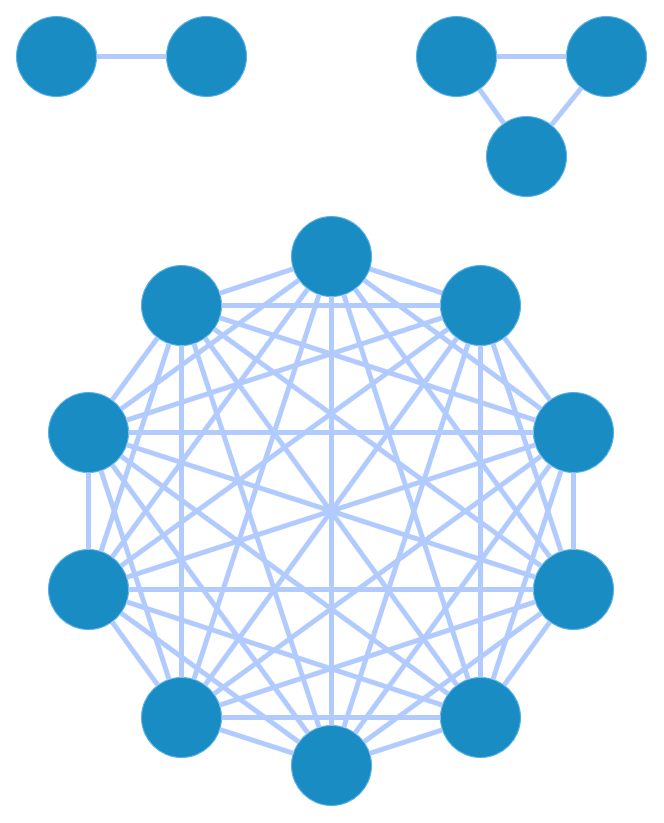Geographic Information Systems (GIS) Development
Geographic Information Systems (GIS) have revolutionized the way we interact with spatial data. From city planning to environmental monitoring and logistics, GIS is a powerful tool that combines maps with data for smarter decision-making. In this post, we'll explore what GIS is, the technologies involved, and how to get started with GIS application development. What is GIS? GIS stands for Geographic Information Systems, which are tools and systems used to capture, store, analyze, manage, and visualize spatial or geographic data. These systems are essential for analyzing patterns, relationships, and geographic trends across various fields. Applications of GIS Urban Planning: Design infrastructure based on population density and land usage data. Environmental Monitoring: Track climate changes, deforestation, or water quality. Disaster Management: Map hazard zones and optimize emergency response logistics. Transportation & Logistics: Optimize routes, manage traffic, and plan delivery systems. Agriculture: Analyze crop health and soil conditions using satellite imagery. Key Components of GIS Development Data: Spatial data (coordinates, maps, images) and attribute data (information about the location). Maps: Visual representations created from layers of geographic data. Tools: GIS software and libraries for manipulating and analyzing the data. Applications: Web or mobile interfaces for users to interact with spatial information. Popular Tools and Libraries QGIS: Open-source GIS desktop application for analyzing and visualizing spatial data. ArcGIS: Enterprise-grade software suite by Esri, used for advanced GIS development. Leaflet.js: Lightweight JavaScript library for creating interactive maps. Mapbox: Modern mapping platform with customizable maps and location-based APIs. GDAL/OGR: Libraries for raster and vector geospatial data manipulation. PostGIS: A spatial database extender for PostgreSQL. Basic GIS Development Workflow Collect Geographic Data: Use satellite data, GPS devices, or public databases like OpenStreetMap. Preprocess the Data: Clean, convert, and format the data (e.g., shapefiles, GeoJSON, KML). Store Data: Use spatial databases like PostGIS to manage geodata efficiently. Develop the Interface: Create web or mobile applications using Leaflet, Mapbox, or OpenLayers. Analyze Spatial Relationships: Implement queries and analytics to derive insights. Visualize the Results: Present data in layers, markers, and thematic maps. Sample Project: Visualizing Population Density with Leaflet.js var map = L.map('map').setView([40.7128, -74.0060], 11); L.tileLayer('https://{s}.tile.openstreetmap.org/{z}/{x}/{y}.png').addTo(map); // Add GeoJSON layer L.geoJSON(populationData, { style: function (feature) { return { fillColor: getColor(feature.properties.density), weight: 1, opacity: 1, color: 'white', fillOpacity: 0.7 }; } }).addTo(map); Challenges in GIS Development Handling large datasets and real-time updates. Ensuring accuracy and relevance of geographic data. Managing performance and rendering complex map layers. Integrating with external services and APIs. Conclusion GIS development is a rewarding field that blends programming, data science, and geography. As more industries recognize the value of spatial insights, GIS applications will continue to play a vital role in shaping our world. Whether you're visualizing data on a map or building complex spatial analysis tools, GIS offers endless opportunities for developers to create impactful solutions.

Geographic Information Systems (GIS) have revolutionized the way we interact with spatial data. From city planning to environmental monitoring and logistics, GIS is a powerful tool that combines maps with data for smarter decision-making. In this post, we'll explore what GIS is, the technologies involved, and how to get started with GIS application development.
What is GIS?
GIS stands for Geographic Information Systems, which are tools and systems used to capture, store, analyze, manage, and visualize spatial or geographic data. These systems are essential for analyzing patterns, relationships, and geographic trends across various fields.
Applications of GIS
- Urban Planning: Design infrastructure based on population density and land usage data.
- Environmental Monitoring: Track climate changes, deforestation, or water quality.
- Disaster Management: Map hazard zones and optimize emergency response logistics.
- Transportation & Logistics: Optimize routes, manage traffic, and plan delivery systems.
- Agriculture: Analyze crop health and soil conditions using satellite imagery.
Key Components of GIS Development
- Data: Spatial data (coordinates, maps, images) and attribute data (information about the location).
- Maps: Visual representations created from layers of geographic data.
- Tools: GIS software and libraries for manipulating and analyzing the data.
- Applications: Web or mobile interfaces for users to interact with spatial information.
Popular Tools and Libraries
- QGIS: Open-source GIS desktop application for analyzing and visualizing spatial data.
- ArcGIS: Enterprise-grade software suite by Esri, used for advanced GIS development.
- Leaflet.js: Lightweight JavaScript library for creating interactive maps.
- Mapbox: Modern mapping platform with customizable maps and location-based APIs.
- GDAL/OGR: Libraries for raster and vector geospatial data manipulation.
- PostGIS: A spatial database extender for PostgreSQL.
Basic GIS Development Workflow
- Collect Geographic Data: Use satellite data, GPS devices, or public databases like OpenStreetMap.
- Preprocess the Data: Clean, convert, and format the data (e.g., shapefiles, GeoJSON, KML).
- Store Data: Use spatial databases like PostGIS to manage geodata efficiently.
- Develop the Interface: Create web or mobile applications using Leaflet, Mapbox, or OpenLayers.
- Analyze Spatial Relationships: Implement queries and analytics to derive insights.
- Visualize the Results: Present data in layers, markers, and thematic maps.
Sample Project: Visualizing Population Density with Leaflet.js
Challenges in GIS Development
- Handling large datasets and real-time updates.
- Ensuring accuracy and relevance of geographic data.
- Managing performance and rendering complex map layers.
- Integrating with external services and APIs.
Conclusion
GIS development is a rewarding field that blends programming, data science, and geography. As more industries recognize the value of spatial insights, GIS applications will continue to play a vital role in shaping our world. Whether you're visualizing data on a map or building complex spatial analysis tools, GIS offers endless opportunities for developers to create impactful solutions.




























![[Webinar] AI Is Already Inside Your SaaS Stack — Learn How to Prevent the Next Silent Breach](https://blogger.googleusercontent.com/img/b/R29vZ2xl/AVvXsEiOWn65wd33dg2uO99NrtKbpYLfcepwOLidQDMls0HXKlA91k6HURluRA4WXgJRAZldEe1VReMQZyyYt1PgnoAn5JPpILsWlXIzmrBSs_TBoyPwO7hZrWouBg2-O3mdeoeSGY-l9_bsZB7vbpKjTSvG93zNytjxgTaMPqo9iq9Z5pGa05CJOs9uXpwHFT4/s1600/ai-cyber.jpg?#)











































































































































![[The AI Show Episode 144]: ChatGPT’s New Memory, Shopify CEO’s Leaked “AI First” Memo, Google Cloud Next Releases, o3 and o4-mini Coming Soon & Llama 4’s Rocky Launch](https://www.marketingaiinstitute.com/hubfs/ep%20144%20cover.png)





























































































































![[FREE EBOOKS] Machine Learning Hero, AI-Assisted Programming for Web and Machine Learning & Four More Best Selling Titles](https://www.javacodegeeks.com/wp-content/uploads/2012/12/jcg-logo.jpg)








































































![Rogue Company Elite tier list of best characters [April 2025]](https://media.pocketgamer.com/artwork/na-33136-1657102075/rogue-company-ios-android-tier-cover.jpg?#)








































































_Andreas_Prott_Alamy.jpg?width=1280&auto=webp&quality=80&disable=upscale#)





























































































![What’s new in Android’s April 2025 Google System Updates [U: 4/18]](https://i0.wp.com/9to5google.com/wp-content/uploads/sites/4/2025/01/google-play-services-3.jpg?resize=1200%2C628&quality=82&strip=all&ssl=1)










![Apple Watch Series 10 Back On Sale for $299! [Lowest Price Ever]](https://www.iclarified.com/images/news/96657/96657/96657-640.jpg)
![EU Postpones Apple App Store Fines Amid Tariff Negotiations [Report]](https://www.iclarified.com/images/news/97068/97068/97068-640.jpg)
![Apple Slips to Fifth in China's Smartphone Market with 9% Decline [Report]](https://www.iclarified.com/images/news/97065/97065/97065-640.jpg)


































































































































